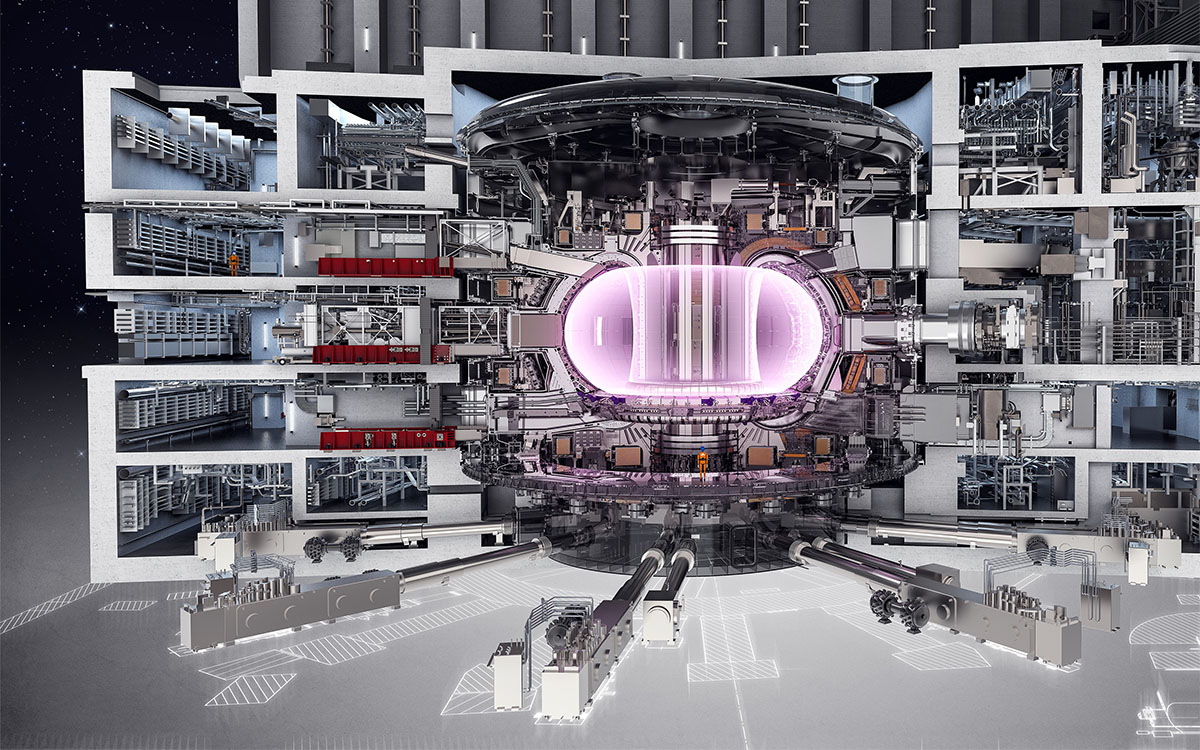building a star in the comfort of your lab

Despite the constant grumbling of naysayers, tiny budgets and disappointment from impatient media outlets, fusion researchers haven’t given up. Igniting a self-sustaining fusion reaction that produces at least ten times the power that was put into it may be an extremely challenging task, but the rewards would simply be too big to ignore. Today, the next big attempt to kick fusion into high gear is the ITER reactor being assembled by a team of scientists and engineers in the south of France. While other researchers have been focused on a reliable, effective method of ignition, the ITER team is aiming far higher. Their goal is to make fusion industrially viable and provide an effective proof of concept test for utility companies interested in building their own artificial sun.
Theoretically, fusion is much more energetic than nuclear fission being used across the world today and it’s a lot safer. It produces little waste which decays relatively quickly and a fusion reactor can’t melt down because as soon as the temperature drops even a notch below insanely blistering, the process winds down unlike the runaway chain reactions possible with fission. Of course, to contain the kind of ferocious reactions produced by nuclear fusion can strip away the lining of the reactor and searing hot plasma that would register at around 150 million degrees (at this temperature the measurement system is pretty much irrelevant) would need to be cooled to remove helium and other byproducts to keep the reaction going. The materials needed to build the reaction chamber and its supporting components? Stainless steel, beryllium, tungsten and carbon fiber. And of course there have to be enough magnets to keep a firm grip on the device’s churning innards.
Now, you can already hear the skeptics. The project will cost billions of dollars, it will only be done by 2018 or so, fusion power has been promised for more than half a century now and we’re still a long ways away. All the same criticisms leveled at countless complex and time consuming projects. And they are valid to a degree. If you’re going to promise something to the public, don’t look to become a media darling and make claims that you can’t back up in reality. If you’re going to take on a challenging project, make good use of your money. But at the same time, what the skeptics need to realize here is that replicating what happens in the core of a star isn’t exactly like boiling an egg. High energy physics aren’t mastered overnight and if you really want to make a machine that can do spectacular things, it will take time and money. Nature doesn’t give you anything for free. You have to work for it.
The $10 billion being allotted for ITER is not even a drop in the bucket when it comes to the kinds of subsidies and credits oil companies and existing utility providers will get on a regular basis. If we allow even less money and demand that scientists somehow cough up new a working fusion reactor, it’ll take even longer to fulfill the stated goal. When it comes to radical new technologies that push our technology to the limits, it’s a question of how badly we want it, how much effort we’re willing invest and how patient we want to be. And right now, as far as fusion is concerned, our lack of will and determination is disturbingly glaring.





